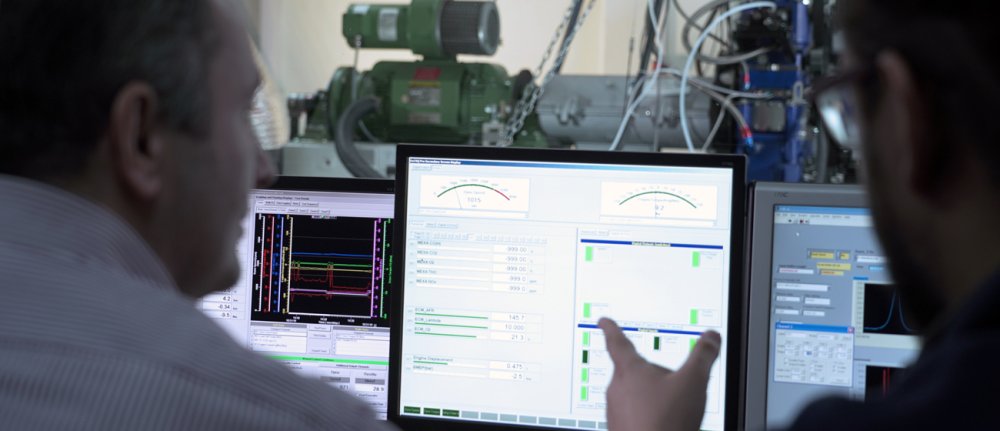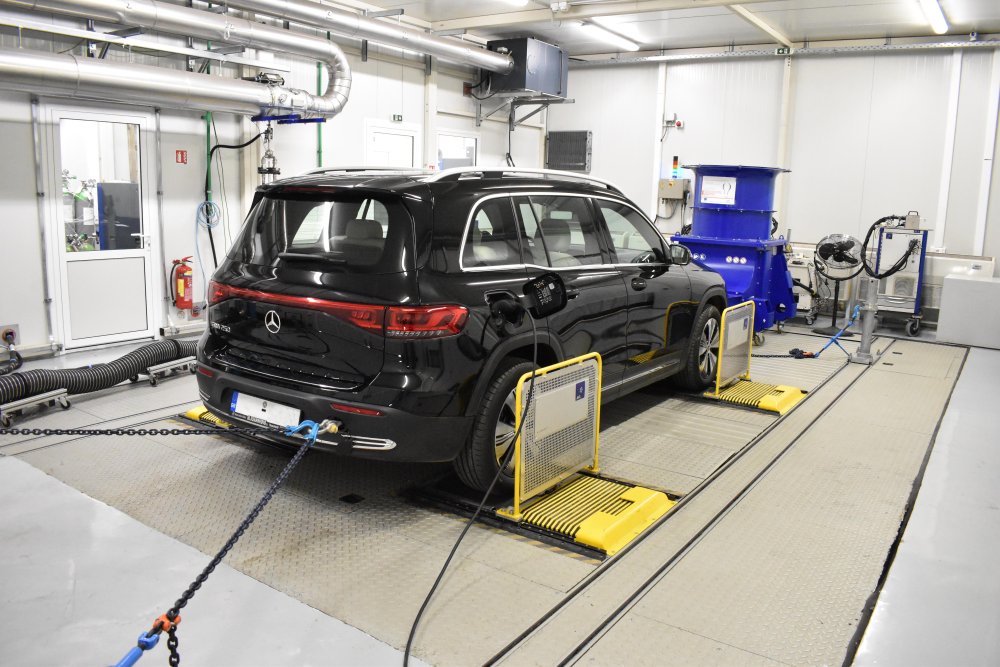ARISTOTLE UNIVERSITY
FACULTY OF ENGINEERING
SCHOOL OF MECHANICAL
ENGINEERING
ARISTOTLE UNIVERSITY
FACULTY OF ENGINEERING
SCHOOL OF MECHANICAL
ENGINEERING
FuVEP
FuVEP supports stakeholders in a whole range of services from fuel, engine, powertrain and exhaust testing, optimisation and analysis to aftertreatment solutions, software simulations, research and legislative consultancy.
The FuVEP team includes staff from across three universities, with 7 professors, 10 senior researchers, more than 12 PhD students, more than 15 engineers, technicians and administrative employees.

We run the numbers.
We support decision makers.
Our Lab provides a comprehensive portfolio of services in testing, including exhaust after-treatment devices, fuels, fuel additives, and RDE. Also, we employ modeling tools to simulate complete exhaust lines with emphasis on emission control. But we our work goes beyond the lab. Making good use of our academic and scientific know-how, we empower industries with consultancy and training solutions on optimal environmental and operational vehicle performance.

FACILITIES & EQUIPMENT
LAT facilities cover a total area of 600m2 inside the Aristotle University Campus from which 400m2 are laboratory facilities.
We operate with state-of-the-art, systematically regulated equipment for real-time measurements of emissions and their physical and chemical properties. Mathematical modeling is supported mainly by in-house software with the possibility to simulate complete exhaust after-treatment systems. These mathematical models are well documented in the related scientific literature and frequently employed to support R&D of various industrial partners. The modeling work is supported by commercial software for 3-D Fluid Dynamics Calculations (Star-CDTM). We conduct ongoing research towards extensive validations with experimental results and further modeling improvements..

TESTING
Emission measurements on engine test benches and chassis dynamometers
Gaseous (CO, HC, NOx, CO2) and particulate emissions are measured on either of the two engine benches or the chassis dynamometer. Legislated driving cycles (NEDC, FTP) or customized driving cycles are performed providing both bag results and instantaneous recordings for each pollutant.
Testing of exhaust after-treatment devices (catalysts, diesel particulate filters)
The performance of exhaust after-treatment devices (catalysts, diesel particulate filters) is characterized by custom testing protocols on the engine bench or on the chassis dyno. In this case, the experimental layout is equipped with complete monitoring equipment for the operating parameters of interest (intake & exhaust flow rates, temperatures & pressures at different positions, A/F sensors etc.).
Characterization of particulate emissions
A large variety of state-of-the-art sampling and measurement equipment is available for the physical and chemical characterization of particulates. The physical properties include mass and size distribution as well as active surface. Thermogravimetric analysis is also possible for the characterization of chemical activity of pure or catalyzed soot.
Testing of fuels and fuel additives
Measurements of octane and cetane numbers of gasoline and diesel fuels can be performed with equipment. The effect of fuel additives on gaseous & particulate emissions as well as on the regeneration performance of diesel particulate traps is also possible either on the engine bench or on the chassis dyno.
RDE testing
Measurement of gaseous emissions (CO, CO2, NOx, HC), PN emissions and exhaust flow rate during RDE tests in LDV, LCV and HDV. Two state of the art PEMS units for on board measurement are available.
Lab software
A large variety of post processing tools are used in the lab, either developed in house (VBA, Excel, Matlab) or commercial ones (AVL Concerto, www.avl.com/concerto). Long experience in testing, results in efficient post processing for targeted evaluation of the measurement data produced in the chassis dyno, the engine bench, the synthetic gas bench and in RDE tests.
We rely on Ganttic resource planning software to manage our testing plan, resource and equipment allocation.
MODELING
The optimized design of emission control systems requires a system approach facilitated by high fidelity simulations.
LAT has pioneered the research on physico-chemical phenomena and the development of mathematical models for exhaust emissions control devices. Over the last 25 years, LAT has developed and applied mathematical models for virtually every type of catalyst and particle filter used in the automotive, heavy-duty and marine sectors.
This work formed the foundation of the industry-standard software tools of Exothermia https://lat.eng.auth.gr/the-lab#id-57